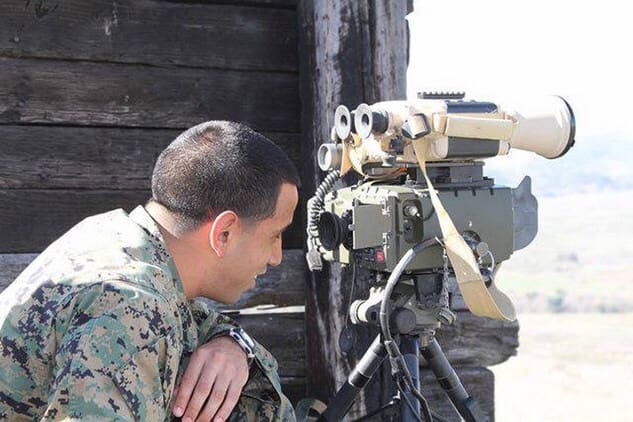MARINE CORPS BASE QUANTICO, Va. —
Marine Corps Systems Command has awarded four Other Transaction Authorities to assess industry’s capability to produce a Next Generation Handheld Targeting System that is compact, rugged and lightweight.
The use of OTAs were approved by Congress in 2016 as a procurement method to pay for prototypes and to use nontraditional defense companies to spur innovation.

The OTAs were awarded to BAE Systems, Elbit Systems of America, Fraser Optics and Northrop Grumman Systems Corporation. The four companies will explore possibilities focused on the following criteria:
-The system’s overall ergonomics for supporting forward deployed, foot mobile users
-Target recognition, location and designation ranges during day and night operations
-The ability to integrate the system with the Target Handoff System Version 2 to view and manipulate target information
-Technological maturity, manufacturability and value engineering
-Sustainability at the operational user level
The Next Generation Handheld Targeting System, or NGHTS, is a single, lightweight, man-portable system that enables Marines to quickly acquire targets; perform guidance of against targets; and generate target location data during combat operations.
“During the first phase, the four awarded companies will explore potential system capabilities and provide Marine Corps Systems Command with an in-depth study of the best solution for our Marines at the best price,” said Megan Full, contract specialist supporting Program Manager Fires at MCSC. “We will collect the findings by the second quarter of fiscal year 2019 and choose one or more vendors to move onto phase two where they will develop and demonstrate prototypes.”
Currently, the Marine Corps uses four legacy systems: the Portable Lightweight Designator Rangefinder, Joint Terminal Attack Controller, Laser Target Designator and Thermal Laser Spot Imager. The intent is for NGHTS to replace all four systems.
“For the last four years, we have worked diligently to explore an option that condenses the legacy versions into one lightweight system with a reliable power supply that is rugged enough to throw onto a Marine’s pack,” said Jeff Nebel, Fire Support Coordination Team lead, PM Fires.
“The NGHTS will combine all of the legacy capabilities into one system that is compatible with both current and future fire support systems, and will support the Marine Corps for the next 15 to 20 years.”
“The NGHTS will be an important advancement because it is planned to reduce the current weight of the laser designation and laser spot imaging capability by 60 percent, which will increase the mobility and lethality of our fire support-focused Marines,” said Maj. Nathan Morales, Targeting Systems project officer, PM Fires. “This capability is focused on our ability to fight in the compartmentalized terrain outlined in the Marine Operating Concept.”
By Kaitlin Kelly, MCSC Office of Public Affairs and Communication | Marine Corps Systems Command


This is good to see, the Army needs to look at doing something similar. We need a common scout dismounted optic that is not garbage to replace all the current systems.
“BAE Systems, Elbit Systems of America, Fraser Optics and Northrop Grumman Systems”
+
“to use nontraditional defense companies to spur innovation.”
=
does not compute
As a fister. My question is are they looking for something like the PLRF? That just adds the capabilities of also designating a target too? Just use a COTS system that is also Bluetooth and connects to a Bluetooth GPS or a phone. I hated carrying around that giant laser designator. So we had it mounted into the truck. It would range the target and give you the grid. Then when I deployed I got a laser range finder that used a cable that hooked up to a DAGR. It was nice shoot the place I wanted hit. It gave me the grid, distance and direction. It was easy. Then to make a target with IR. I would just use a IZLD. (Or what ever the thing was called) granted it was two things I had to carry. But it was nice throwing the IR laser into a pocket or pouch and not having to pull out anything big and square that didn’t fit into my pocket.